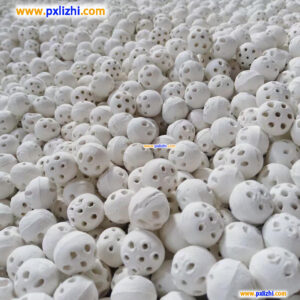
# Alumina Ceramic Ball: Properties and Applications
## Introduction to Alumina Ceramic Balls
Alumina ceramic balls are high-performance ceramic spheres made from aluminum oxide (Al2O3). These balls are widely used in various industrial applications due to their exceptional mechanical, thermal, and chemical properties. With purity levels ranging from 90% to 99.9%, alumina ceramic balls offer different performance characteristics suitable for diverse applications.
## Key Properties of Alumina Ceramic Balls
### 1. High Hardness and Wear Resistance
Alumina ceramic balls exhibit remarkable hardness, ranking 9 on the Mohs scale, just below diamond. This property makes them highly resistant to wear and abrasion, ensuring long service life even in demanding environments.
### 2. Excellent Thermal Stability
These ceramic balls can withstand extreme temperatures up to 1600°C (2912°F) without significant degradation, making them ideal for high-temperature applications.
### 3. Superior Chemical Resistance
Alumina ceramic balls demonstrate excellent resistance to most acids, alkalis, and organic solvents, ensuring stable performance in corrosive environments.
### 4. Electrical Insulation Properties
With high electrical resistivity, alumina ceramic balls serve as excellent insulators in electrical applications.
### 5. Low Density
Compared to metal balls, alumina ceramic balls have lower density (typically 3.6-3.9 g/cm³), reducing energy consumption in rotating applications.
## Common Applications of Alumina Ceramic Balls
### 1. Grinding Media
Alumina ceramic balls are extensively used as grinding media in ball mills for:
– Ceramic raw material processing
– Paint and pigment production
– Pharmaceutical manufacturing
– Food processing
### 2. Bearing Components
Their high hardness and wear resistance make them ideal for:
– High-speed spindle bearings
– Precision instruments
– Aerospace applications
### 3. Valve Components
Alumina ceramic balls serve as:
– Valve balls in corrosive fluid handling
– Check valve components
– Flow control devices
### 4. Catalyst Supports
In chemical processing, they function as:
– Catalyst carriers in petrochemical industries
– Support media in catalytic converters
– Reactor packing materials
### 5. Other Industrial Applications
Additional uses include:
– Wear-resistant liners
– Pump components
– Semiconductor manufacturing equipment
– Textile machinery parts
## Selection Considerations
When choosing alumina ceramic balls for specific applications, consider:
– Purity level (90%, 95%, 99%, or 99.9% Al2O3)
– Size and dimensional accuracy
– Surface finish requirements
– Operating environment (temperature, chemicals, pressure)
– Load and stress conditions
## Maintenance and Handling
Proper handling of alumina ceramic balls includes:
– Avoiding impact loading during installation
– Using appropriate cleaning methods
Keyword: alumina ceramic ball
– Storing in dry conditions
– Regular inspection for wear or damage
Alumina ceramic balls continue to replace traditional materials in many industrial applications due to their superior properties and cost-effectiveness over the long term. As technology advances, we can expect to see even broader adoption of these versatile ceramic components across various industries.